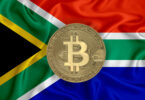Hong Kong is in the process of issuing tokenized green bonds and has hired the Bank of China, Credit Agricole, Goldman Sachs and HSBC to work on the issuance, according to a Bloomberg report. The HK$800m ($102m) digital green bond issuance is part of a pilot tokenization program. The news is based on investor calls by the banks planned from today onwards. [Update: Now officially confirmed.]
The digital bond issuance and ownership will be logged on the Goldman Sachs Digital Asset Platform (GS DAP), the enterprise blockchain that debuted with a €100m tokenized bond issuance for the European Investment Bank (EIB) in late November 2022. Goldman was one of two banks, alongside Thailand’s Krungthai Bank, involved in Hong Kong green bond experiments with the BIS Innovation Hub as part of Project Genesis 2.0.
In January, the Hong Kong Monetary Authority (HKMA) confirmed to Ledger Insights that it was planning a tokenized bond issuance following an institutional sale of $5.75 billion in green bonds that were conventionally issued.
“The HKMA is working on another institutional government green bond in tokenised format,” an HKMA spokesperson told Ledger Insights in January. “The objective is to test out the financial infrastructure and the legal and regulatory environment in Hong Kong for the use of DLT throughout the bond lifecycle and to serve as a guide for similar future issuances by market participants.”
By using blockchain, the record keeping aspect of the issuance process can be automated, rather than using emails and spreadsheets. Going forward, ownership details are also recorded on the distributed ledger, dramatically reducing reconciliation costs. The efficiencies make smaller bond issuances more feasible.
DLT also enables additional business model innovation. In the Hong Kong green bond trials, the green claims (mitigation outcome interests or MOIs) were separated from the financial instrument and separately tokenized, enabling their independent trading. New green claims are issued annually based on the underlying investment.
HSBC also has its own bond issuance platform Orion, which was used for another EIB tokenized bond issuance. The proliferation of tokenization platforms raises the issue of interoperability and integration. However, there are multiple potential solutions in the works.
The DAML smart contract language, which underpins the Goldman Sachs DAP, is designed to work with both centralized databases and multiple blockchains and provides one level of interoperability. Another solution is finP2P from Ownera which provides a routing network between various blockchain issuance platforms so that investors can access products on multiple platforms. Other interoperability solutions in the works include the Regulated Liability Network (RLN) and SWIAT.






